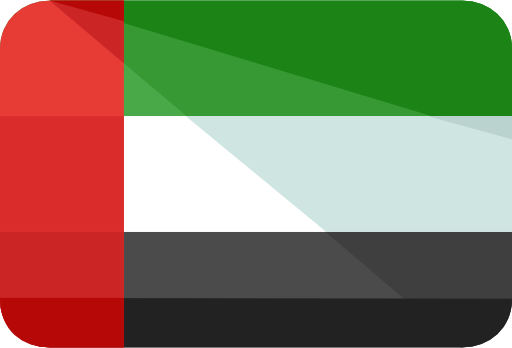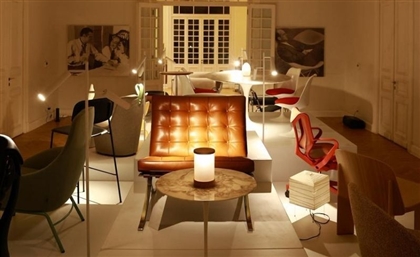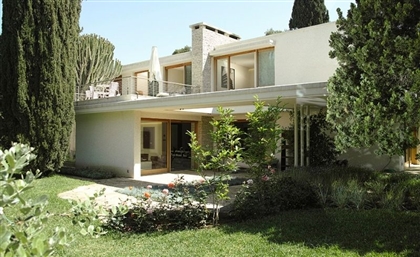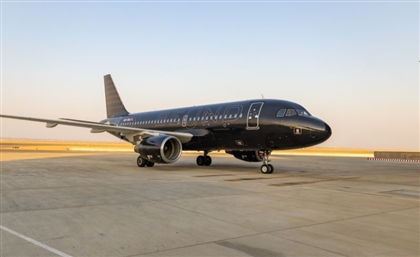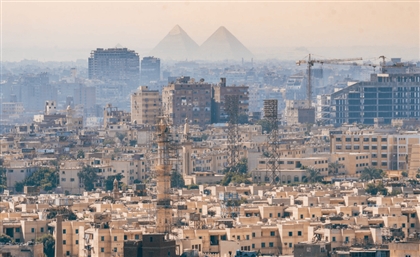Middle Eastern Modernism: Sculpted Forms From Desert & Sea
Blending minimalist design with regional heritage, these landmarks exemplify modernist architecture across the Middle East, where streamlined forms meet cultural and environmental influences.

Modernist architecture in the Middle East tells a story of contrast and continuity, where avant-garde forms meet deep-rooted traditions. From the silent grandeur of Niemeyer’s fairgrounds in Tripoli to the luminous dome of the Louvre Abu Dhabi, these structures reflect ambition shaped by place, climate, and memory.
Across deserts and coastlines, modernism takes on new character - emerging as libraries that unfold like landscapes, museums rooted in geology, and assemblies that echo Bedouin tents. Each project becomes a built narrative, where global ideas meet the rhythms of the region...
National Museum of Qatar – Doha, Qatar
-024e7c0e-de77-458d-b9b6-1aa630a33b1f.jpg)
In Doha, the National Museum of Qatar, designed by Ateliers Jean Nouvel, stands as a radical reinterpretation of local geography and heritage. Drawing inspiration from the 'desert rose' mineral formation, the building unfolds as a network of interlocking concrete disks that propagate organically around a historic palace. This design merges with the landscape while creating shaded, walkable public spaces. The sand-coloured cladding harmonises with the surrounding environment, while the elliptical circulation route gently rises and falls, following the undulations of the Qatari terrain. 11 galleries trace Qatar’s history, culminating in the restored palace, all set within a landscaped park featuring gardens inspired by sabkhas, oases and dunes.
Tripoli International Fair (Rashid Karameh International Exhibition Center) – Tripoli, Lebanon
-61eb5e81-577a-45e7-bf84-04b0d71ba045.jpg)
At the Rashid Karameh International Exhibition Center in Tripoli, Lebanon, one encounters a striking testament to modernist ambition. Designed by Oscar Niemeyer in 1963, the 70-hectare site contains 15 concrete structures, conceived as one of the world’s largest exhibition centres. Construction was halted during the Lebanese civil war in 1975, leaving the site hauntingly unfinished. Recent efforts to restore parts of the project, notably the Niemeyer Guest House, signal a renewed appreciation for its innovative forms. The fragmented, sculptural structures echo a complex interplay of imagination, progress, and unfinished dreams, and the site now holds a place on UNESCO’s World Heritage in Danger list.
Louvre Abu Dhabi – Abu Dhabi, UAE
-386ffb30-4bfd-404d-8017-66a0eab23576.jpg)
Perched on the Gulf’s coast, Jean Nouvel’s Louvre Abu Dhabi carves out a unique presence, envisioned as a ‘museum city’ resting in the sea. The project takes inspiration from traditional Arabic architectural culture. 55 white cubic buildings evoke the medina, topped by a monumental 180-metre-diameter double dome. Its layered steel and aluminium structure is perforated to filter daylight, creating a signature ‘rain of light’. The dome appears to float, supported by only four hidden piers. The choreography of light, shadow, and reflection fosters a sanctuary-like environment, where the geometries of Arab heritage merge with modern construction ingenuity.
Qatar National Library – Doha, Qatar
-95c3a0f9-3797-421d-b23b-ab650dd54da5.jpg)
Rem Koolhaas and OMA’s design for the Qatar National Library is formed as a singular, open space,138 metres in length. Its plate-like structure is lifted at the edges to create terraced aisles for books, allowing uninterrupted visual connection across the space. Shelving in white marble merges with the flooring, and the infrastructure integrates lighting, ventilation, and return systems. The building accommodates over a million volumes and includes a prominent Heritage Collection at its core, accessible by a sunken patio and enveloped by beige travertine. Diffused natural light and reflective aluminium ceilings establish a calm reading atmosphere. The library stands at the heart of Doha’s ‘Education City’.
Kuwait National Assembly Building – Kuwait City
-437ddd63-32d2-4d34-83c4-e448ba624f39.jpg)
Jørn Utzon’s National Assembly Building in Kuwait is as much a commentary on political identity as it is a celebration of modernist ideals. The design’s prominent feature is a public colonnade with thin piers supporting a billowing concrete roof, recalling Bedouin tent structures. This dramatic canopy, composed of semi-circular shells on steel cables, exemplifies Utzon’s mastery in making concrete appear as weightless as fabric. Behind the plaza, government functions are organised in a grid inspired by bazaars, with central courtyards and circulation spaces. The use of precast concrete forms and abstracted Arab ornamentation reveals both a nod to tradition and a distinctly modernist approach.
Dubai Trade Centre – Dubai, UAE
-3e968a6a-973f-4ef9-a4ce-658537b0e371.jpg)
The Dubai Trade Centre, designed by John R Harris & Partners, was completed in 1979 as the city’s first skyscraper. Standing 149 metres tall, it remained the tallest building in the Arab world for two decades. Its honeycomb-like precast-concrete façade offers sun protection and visual rhythm. The signature fluted concrete panels, originally exposed, were later painted white at the request of Sheikh Rashid. The tower introduced a stark, minimalist form that contrasted with the low-rise urban fabric of the time, marking a turning point in Dubai’s architectural development.
- Previous Article Azza Fahmy Brings Jewellery & Craft to Egypt’s North Coast This Summer
- Next Article Six Unexpected Natural Wonders to Explore in Egypt
Trending This Week
-
Nov 13, 2025



